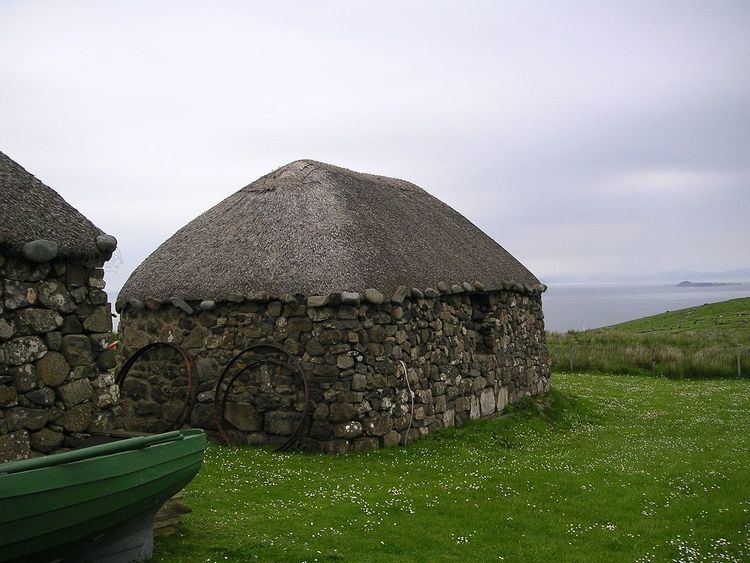 | ||
Dark earth in archaeology is an archaeological horizon, as much as 1 m (2 – 3 ft) thick, indicating settlement over long periods of time. The material is high in organic matter, including charcoal, which gives it its characteristic dark colour; it may also contain fragments of pottery, tile, animal bone and other artefacts. It is interpreted as soil enriched with the sooty remains of thatched roofs from houses without chimneys, with other waste materials. In some areas it appears to give the soil added fertility.
Contents
London's dark earth was originally called 'black earth' by archaeologists. It was renamed dark earth because of confusion with the chernozem (black earth soils in Russia; in these, the dark colour is traditionally (not universally) thought to come from humus, rather than soot).
Charred material as agricultural improver
In the Hebrides, it was customary to remove the thatch from the "black houses" every spring, and spread it on the fields as fertilizer, improved by the soot which it retained. On Achill Island, special smoke huts were built in the fields, stone structures with sod roofs. From October to May smoky fires burned inside them, and in spring the sods were spread on the fields. In the Amazon basin, there are very extensive areas of dark soil, known as terra preta, enriched by small particles of soot, and these areas are much more fertile than the natural soil.
Roman Britain
In England, dark earth covers many areas that were built up in the Roman period, especially Londinium. In some cases, it may represent open spaces on the edge of urban centres, but can also be found in more rural settings in and around foci of settlement. In the example of London, deposits underlying the ancient city's dark earth are often dated to between the 2nd to 5th century, the middle and later Roman period. Overlying deposits are frequently dated to the 9th century when Saxon London was repopulated and began to expand. The dark earth shows little evidence of any depositional structure or 'horizons', although tip lines are sometimes recorded.
Archaeologists have debated what London's dark earth layer may indicate about human use of the city. It has been taken as evidence of refuse disposal or gardening during the Roman period on the site of previous buildings. In this case it might be evidence of a decline of Londinium's population, or of its partial displacement outside the city walls. However, late Roman cemeteries around London do not show a population decline compared with earlier London.
Alternatively, dark earth might have formed only after abandonment at the end of the Roman period. In this interpretation, dark earth would consist of urban deposits of smoke-impregnated thatch, decayed weeds, timber, and earth floors, reworked and homogenized by worm action, or by agricultural (ploughing), which mixed building materials from the abandoned Roman cities with material deposited later.
Sweden
In Sweden, dark earth covering 40 hectares has been found in Uppåkra (in southernmost Sweden, former Denmark), where city-like settlement existed from about the year 1 until 1000 C.E. when the settlement shifted to modern day Lund. Dark earth over 7 hectares has been found in the Viking city of Björkö (today called Birka), in central Sweden, close to modern Stockholm. Dark earth has also been found in Köpingsvik, on the island of Öland close to the southern Sweden east coast.
